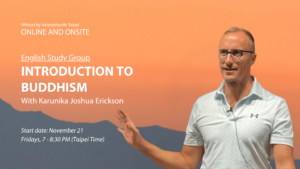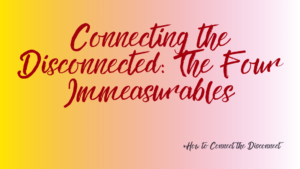Growing up, I would often pass my father’s study and see him sitting silently as the day began. His meditation was the calm before the storm of another busy day. It impacted me then, and the image continues to deeply resonate as I grow older. It is a reminder that stillness and silence are options. As I approach the age my father was then, the memory of his meditation is an invitation to relax, to engage in something other than the conventional rat race of job and family obligations, hopes and fears, and constant distraction.
The combination of shamatha (calm abiding meditation) and analytical contemplation (delving deeply into Buddhist topics to explore their wisdom) can be helpful to stretch us out of our comfort zones, encourage us to relax, and let go of our habits.
One practice that has been effective for me is contemplating the Four Reminders, which are known as “the thoughts that turn the mind toward liberation.” Investigating these reminders can be inspiring and profound. Sitting with them and thinking about them can bring something fresh to our experience.
The Four Reminders are the preciousness of our human birth, the truth of impermanence, the infallibility of cause and effect, and the pervasiveness of suffering. Here is one translation of the classical verses:
First, contemplate the preciousness of being free and well favored.
This is difficult to gain, and easy to lose. Now I must do something meaningful.Second, the whole world and its inhabitants are impermanent.
In particular, the life of beings is like a bubble.
Death comes without warning, this body will be a corpse.
At that time, the dharma will be my only help. I must practice with exertion.Third, at the time of death, I will be helpless.
Because I create karma, I must abandon negative actions, and always devote myself to virtuous ones. Thinking this, every day I will examine myself.Fourth, the homes, friends, wealth, and comforts of samsara are the constant torment of the three sufferings, just like a feast before the executioner leads you to your death.
I must cut desire and attachment, and attain enlightenment through exertion.
Contemplation Exercise
- To start an analytical meditation session, find a quiet space.
- Do a few minutes of calm abiding meditation, and then slowly recite one of the verses. (Memorizing them is encouraged.)
- Engage your thinking mind with curiosity and creativity. Go beyond the words to experience the meaning that they convey. Allow yourself to deeply feel what they mean to you.
- You can contemplate all four, or focus on just one.
- Conclude with a few minutes of calm abiding meditation.
Future articles will explore each of the Four Reminders separately. In the meantime, happy contemplation!

Nick Vail is a Karunika (teacher) for Nalandabodhi who lives in Maine.
A single parent, he enjoys quality time with his son, being in nature, playing the guitar, singing, dancing, and meditation.






